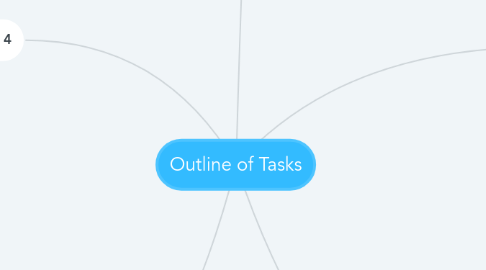
1. Task 4
1.1. Overview
1.1.1. Students learn about the impact of human activity on habitats such as deforestation or the introduction of a new species. They must research either the traditional use of fire by Aboriginal people or the effects of Palm Oil production in Sumatra and Borneo.
1.2. ICT Integration
1.2.1. Vocaroo
1.2.1.1. Vocaroo is an online recorder and students must use this to record their information about the topic they have researched. Once they have finished they must download it as a MP3 and upload it to Padlet.
1.2.2. Padlet
1.2.2.1. Students have to upload their group podcast to Padlet. Students have to comment on other class members podcasts about one interesting fact they learnt.
1.3. Curriculum Learning Area
1.3.1. Interactions between organisms can be described in terms of food chains and food webs; human activity can affect these interactions (ACSSU112)
1.3.1.1. Investigating the effect of human activity on local habitats, such as deforestation, agriculture or the introduction of new species
2. Task 3
2.1. Overview
2.1.1. All students will participate in a class discussion based on Food Webs and then complete a KaHoot quiz to reinforce their prior knowledge on food chains. Students choose a food web and create a comic strip detailing what would happen if one aspect of a food chain within that web was removed.
2.2. ICT Integration
2.2.1. Book Creator
2.2.1.1. Student use this ICT tool to create a story book of what would happen to a food web/chain if one item was to go missing. It involves intellectual thinking but it a great way to get all students to participation. It is engaging as you can copy in images, sounds and create your own voice over to create a story.
2.3. Curriculum Learning Area
2.3.1. Interactions between organisms can be described in terms of food chains and food webs; human activity can affect these interactions (ACSSU112)
2.3.1.1. Constructing and interpreting food webs to show relationships between organisms in an environment
3. Task 1
3.1. Overview
3.1.1. This lesson builds a basis for all learning through the WebQuest as it links to the classification of all living things. Students explore the different hierarchal levels and research their given topic.They will create an animation to show to the class describing what was researched.
3.2. ICT Integration
3.2.1. Wheel Decide
3.2.1.1. A free online spinner tool that allows students to spin a wheel of topics and it will randomly assign each student the topic they must research. It is a great tool for the teacher as students have the fun of seeing the wheel spin, waiting with suspense and then selecting their topic.
3.2.2. Do Ink
3.2.2.1. Do Ink. Students create a animation using green screen to explain the topic the have researched. It is a chance for students to show what they know or have learnt about their topic.
3.3. Curriculum Learning Area
3.3.1. Classification helps organise the diverse group of organisms (ACSSU111)
3.3.1.1. Classifying using hierarchical systems such as kingdom, phylum, class, order, family, genus, species
4. Task 2
4.1. Overview
4.1.1. In this lesson students will watch a short YouTube clip about food chains, take notes during it which will be later explored in the class discussion. After research, students choose their own food chain topic and create one using Coggle.
4.2. ICT Integration
4.2.1. Coggle
4.2.1.1. An interactive online word mapping tool where students have to create their own mind map (food web) based on the research they have done. Students must use their imagination to create a bright, interesting mind map that is engaging for the audience.
4.3. Curriculum Learning Area
4.3.1. Interactions between organisms can be described in terms of food chains and food webs; human activity can affect these interactions (ACSSU112)
4.3.1.1. Using food chains to show feeding relationships in a habitat
5. WebQuest Task Overview
5.1. Year Level: 8
5.1.1. Learning Area: Science
5.1.1.1. Sub-strand: Biological Sciences
5.1.2. Content Descriptors:
5.1.2.1. Classification helps organise the diverse group of organisms (ACSSU111)
5.1.2.2. Interactions between organisms can be described in terms of food chains and food webs; human activity can affect these interactions (ACSSU112)
5.1.3. Topic Summary
5.1.3.1. Students explore the role of the classification system and further develop their understanding of hierarchy within a system. They develop food chains and food webs to represent our diverse ecosystem and impacts that may affect these systems. Students research the effect of human activity such as the use of fire by traditional Aboriginal people and the effects of palm oil production in Sumatra and Borneo.
5.1.4. ICT Tool
5.1.4.1. Book Creator
5.1.4.1.1. At the end of each lesson all students must upload their work to Book Creator. We found it easy for students to use and it is a great way of showing their work throughout the term. It is a straight-forward and simple tool to create and publish one's work.

